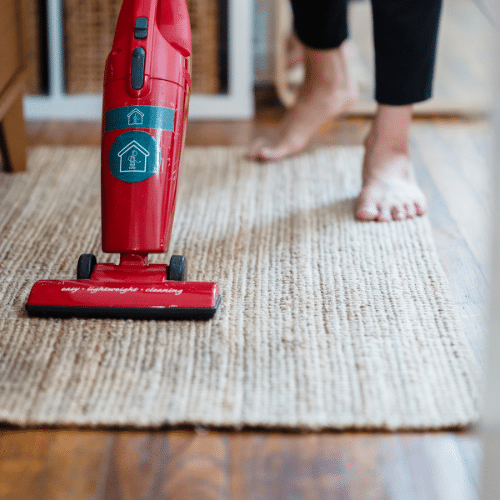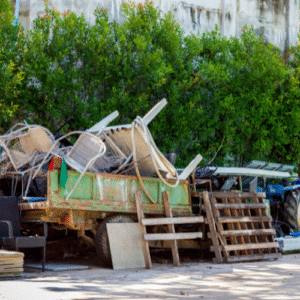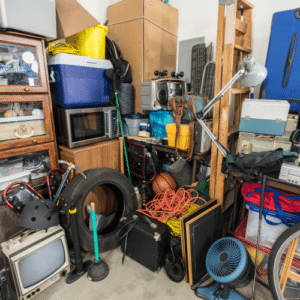
13 Nov Stop Pests with a Cleaner Space
Declutter Homes for Pest Control
Clutter in homes and businesses is more than just an eyesore or inconvenience; it can become a magnet for pests. South Florida’s warm and humid climate creates an ideal breeding ground for pests, and cluttered spaces can enhance the appeal of indoor areas even further. Stacks of boxes, forgotten corners, and cluttered storage rooms provide hiding places, food sources, and breeding grounds for pests, leading to infestations that can disrupt your property’s cleanliness, safety, and health.
At Pest Busterzz, a family-owned organic pest control company, we often find that homes and businesses with high levels of clutter are more likely to develop pest issues. By helping our clients understand the connection between clutter and pest infestations, we aim to support healthier and safer spaces across South Florida. In this article, we’ll explore why clutter attracts pests, identify common pests found in cluttered areas, and offer tips for reducing clutter and preventing infestations.
Reduce Clutter Keep Pests Out
Spaces like basements, attics, and storage rooms often accumulate clutter, creating dark and hidden areas that attract pests. Dim, undisturbed places are ideal environments for many pests to thrive undetected. Accumulated clutter in homes or businesses provides pests with a safe, sheltered space where they can settle and reproduce. Rodents and insects, for example, are drawn to stacks of cardboard boxes, clothing, and paper, which provide warmth and privacy. As these items remain undisturbed, they become increasingly inviting to pests seeking quiet places to hide.
In addition, clutter complicates efforts to spot pest activity, allowing infestations to grow unchecked. Once pests establish a colony, they can multiply rapidly, making it even more challenging to manage the issue. Ignoring these areas enables pests to breed and expand, turning a minor problem into a much larger infestation that’s harder to control.
Cluttered spaces can also conceal food crumbs, spills, and leaks, offering unexpected sources of food and water that attract pests. An unused, cluttered pantry may hide crumbs, open packages, and sticky surfaces that draw in ants and cockroaches. Moisture from leaky pipes near cardboard boxes or storage bins can also create a water source, further attracting pests.
Cockroaches, for instance, thrive in areas where food and moisture are present, making cluttered kitchens, storage rooms, and pantries prime locations for infestations. Rodents, ever opportunistic, also target areas with food debris or water to support their nests. By regularly decluttering and cleaning, homeowners and business owners can eliminate many hidden resources that pests rely on to survive and multiply indoors.
Common Pests Found in Cluttered Areas
Rodents, including mice and rats, are some of the most common pests found in cluttered spaces. These animals use cluttered areas for nesting and protection, especially if there is an accessible source of food nearby. Rodents are also skilled at hiding in places with little light or human activity, so they often go undetected in cluttered basements, attics, and storage rooms. As they nest, rodents gather materials such as shredded paper, cardboard, and fabric, which they often find in cluttered spaces.
Once rodents settle into a cluttered area, they can multiply quickly, turning a small problem into a larger infestation. In addition to causing property damage by chewing through boxes, furniture, and even electrical wires, rodents leave droppings and urine that pose health risks. Addressing clutter is a critical first step in deterring rodents from taking up residence in these areas.
Cockroaches, ants, spiders, and termites are other pests that thrive in cluttered spaces. Cockroaches, in particular, prefer dark, damp areas where they can feed on organic materials such as food residue or paper products. Cluttered kitchen cabinets, storage rooms, and utility closets often become ideal homes for cockroaches, where they can hide and breed without disturbance. Spiders are also attracted to clutter because it offers plenty of hiding places for them to build webs and trap prey.
Termites and silverfish are especially attracted to paper-based clutter, such as cardboard boxes, old books, and stored documents. Termites feed on cellulose, which is found in paper and wood, and can cause significant damage if left undisturbed. Silverfish, meanwhile, consume starchy materials like paper and fabric, making cluttered spaces ideal environments for them to thrive. By keeping clutter under control, homeowners can reduce the likelihood of attracting these pests.
Health and Safety Risks
Cluttered areas that attract pests can quickly turn into health hazards. Pests such as cockroaches, rodents, and ants leave behind droppings, urine, and allergens that contribute to poor indoor air quality. Over time, exposure to pest allergens can lead to respiratory issues, allergies, and asthma symptoms, especially for individuals with preexisting conditions. Rodent droppings, in particular, can carry diseases, putting anyone who comes into contact with them at risk.
Clutter also increases the risk of pest-related contamination in food storage areas. Cockroaches and rodents that come into contact with food containers or preparation surfaces can spread bacteria, leading to foodborne illnesses. Regular cleaning and decluttering reduce the risk of health issues caused by pest infestations, helping homeowners and businesses maintain safe indoor environments.
In addition to health risks, cluttered pest hotspots can create fire and structural hazards. Rodents, in particular, are known to chew on electrical wiring, increasing the risk of electrical fires. In homes and businesses with significant clutter, these chewed wires often go unnoticed until they pose a serious safety threat. Other materials, such as old newspapers and cardboard boxes, can also become fire hazards when left in cluttered spaces with little ventilation.
Structural damage is another concern, especially in cases where termites and rodents are present. Termites feed on wooden structures, weakening walls, floors, and beams. Over time, this can lead to costly repairs and compromise the stability of the building. By addressing clutter and monitoring pest activity, property owners can prevent these hazards and protect their investments.
Smart Storage Solutions
One of the simplest ways to reduce clutter and prevent pest hotspots is to clean and organize your space regularly. Focus on areas like basements, attics, closets, and garages, where clutter tends to build up. Removing unused items and keeping surfaces clear reduces hiding spots for pests and makes it easier to spot any signs of pest activity. Decluttering also makes cleaning more efficient, as there are fewer obstacles to navigate when vacuuming, dusting, and inspecting.
Regularly organizing and cleaning also disrupts potential nesting sites, making it harder for pests to settle in. In high-clutter areas, set a routine for reorganizing items and discarding anything no longer needed. Staying proactive with decluttering keeps pests at bay and maintains a healthier indoor environment.
Using the right storage solutions can go a long way in preventing pest infestations. Swap out cardboard boxes for plastic storage bins with tightly sealed lids, as these containers are less likely to attract pests. Pests like termites, rodents, and silverfish are attracted to cardboard and paper, which provide easy access to food and nesting material. By using durable, pest-resistant storage containers, you can reduce the appeal of cluttered spaces to these pests.
Additionally, avoid storing items directly on the floor, as this makes it easier for pests to access them. Place storage bins on shelves or pallets to create a barrier between your belongings and the ground. Proper storage solutions help prevent infestations and protect your items from damage caused by pests.
Targeting Pest Hotspots
Professional pest control experts have the tools and experience to identify potential pest hotspots in cluttered areas. By inspecting cluttered spaces, such as basements, attics, and storage rooms, professionals can pinpoint where pests are likely to nest, breed, and hide. At Pest Busterzz, we assess each property for pest activity and provide guidance on how to reduce clutter that attracts pests.
By identifying and addressing these hotspots, professionals can create a more effective pest control plan tailored to your property’s specific needs. This approach helps prevent future infestations by targeting areas that are most likely to harbor pests.
Professional pest control services, like those offered by Pest Busterzz, provide customized treatment plans for properties dealing with clutter-related pest issues. Our team offers eco-friendly pest control treatments that minimize harm to the environment while effectively targeting pests in cluttered areas. We also provide ongoing support, helping clients implement long-term prevention strategies that keep pests from returning.
Through regular inspections and follow-up treatments, professional pest control ensures that homes and businesses remain pest-free. For South Florida residents, investing in professional pest control can make a significant difference in maintaining clean, clutter-free, and pest-free spaces.
Conclusion
Household clutter may seem harmless, but it plays a major role in attracting pests and creating infestation hotspots. Cluttered areas provide pests with food, water, shelter, and hiding spots, making it easy for infestations to grow and spread. The health and safety risks associated with clutter-related pest issues—from respiratory hazards to fire risks—underscore the importance of keeping spaces clean and organized.
Proactive clutter management, combined with regular cleaning, effective storage solutions, and professional pest control, can significantly reduce the risk of pest infestations. At Pest Busterzz, we understand the unique challenges that South Florida residents face with pest control, and we’re here to provide safe, sustainable solutions. Whether you’re a homeowner or business owner, our eco-friendly treatments and expertise can help you create a healthier, clutter-free environment.
Reducing clutter and addressing pest problems early not only protects your property but also contributes to a safer, healthier community. If you’re looking to eliminate pests and enjoy a cleaner living or working space, contact Pest Busterzz today for professional support and customized pest control solutions. Together, we can keep your home or business free of clutter and pests, preserving both your property and peace of mind.






No Comments